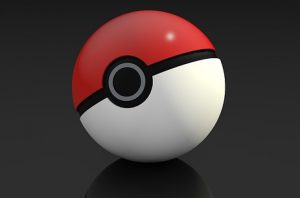By Katrina L. Piercy, PhD, RD, Physical Activity and Nutrition Advisor and Alison Vaux-Bjerke, MPH, ORISE Fellow, ODPHP
 By now, you’ve almost certainly heard about Pokémon Go, the augmented reality video game that has kids (and adults!) across the country captivated. In fact, SurveyMonkey reported in July that Pokémon Go is now officially the most popular mobile game in U.S. history.
By now, you’ve almost certainly heard about Pokémon Go, the augmented reality video game that has kids (and adults!) across the country captivated. In fact, SurveyMonkey reported in July that Pokémon Go is now officially the most popular mobile game in U.S. history.
Health professionals who work to promote physical activity generally aren’t big advocates for video games. Although other games have tried to incorporate physical activity, the image that usually comes to mind when a kid is engrossed in a video game involves staring at a screen for hours. But there’s room to consider whether this particular game could be, well, a game changer when it comes to kids and physical activity. That’s because Pokémon Go not only has people captivated — it also has them moving.
For those who aren’t familiar with the game, here’s a quick rundown of how it works:
Pokémon Go gameplay happens in the real world, not on a couch. After downloading the app to a smartphone, players choose an avatar that shows up on a map of their real-life location (the app uses a GPS). As Pokémon (virtual wild creatures) randomly pop up on the map, players literally walk (or run!) to capture them. They also go to Pokéstops — real-life places, like churches and monuments — to collect supplies that help them hunt and advance to higher levels of play.
So, what kind of impact could Pokémon Go have on physical activity levels of its players? The folks behind Cardiogram (an app for Apple watch designed to evaluate heart rate data) were curious enough about that question to do a little research. They looked at data from a sample of 35,000 Cardiogram users and found that, on the day of the game’s launch, about 45 percent got at least 30 minutes of physical activity — fairly typical for their users. But after just 2 days, the number rose to 50 percent — and on day 3 of Pokémon Go mania, it hit 53 percent. Cardiogram has no way to know for sure if the users they looked at were actually playing Pokémon Go, but the timing of such a substantial spike in physical activity among their users is, at the very least, intriguing.
We know that if you’re playing Pokémon Go, you really are on the go — and that’s a good thing. But it’s key to remember that you’re also “playing.” This gets at a tried-and-true strategy for promoting physical activity and a fundamental recommendation of the Physical Activity Guidelines for Americans: the best activity is one that you enjoy doing. Why? Because you’re more likely to stick with it. If you’re following Pokémon Go media coverage, you’ve probably seen plenty of stories of people attesting to serious changes in their physical activity habits — including parents describing how the game gets their kids away from the computer, out of the house, and on the move. For parents struggling to ensure their kids get enough physical activity, that’s a big deal.
It’s also important to note that the Pokémon Go app uses the GPS to record how far players walk. Though it’s too soon to say anything definitively, this could improve the quality of data that’s available on the physical activity levels of young people. And ultimately, it’s data like these that may help us inform policy — like the Physical Activity Guidelines for Americans — down the line.
It’s important to note that Pokémon Go isn’t perfect. Even with the added physical activity, it increases screen time — and there are some pretty major public safety considerations when we’re talking about lots of people running around with their heads buried in their phones. Since its release, there have been many reports of people getting lost or injured during gameplay.
If you’re a parent of a child playing Pokémon Go, make sure your kids know to stay in familiar areas when they’re playing, and remind them that trespassing is still trespassing — whether or not there’s a rare Pokémon to be caught by doing it.
September is National Childhood Obesity Awareness Month, a time for us all to reflect on what we can do to support healthy choices for our country’s children. Currently, about 1 in 6 U.S. children and adolescents are obese — that’s a number that we need to work together to change. And Pokémon Go — whatever its future or potential implications on kids’ physical activity — provides some interesting food for thought.
Spread the word! Share this post with this sample tweet: What does catching wild #Pokémon have to do with #PublicHealth? Maybe more than you think: https://health.gov/news/blog/2016/09/pokemon-go/#PreventionMatters